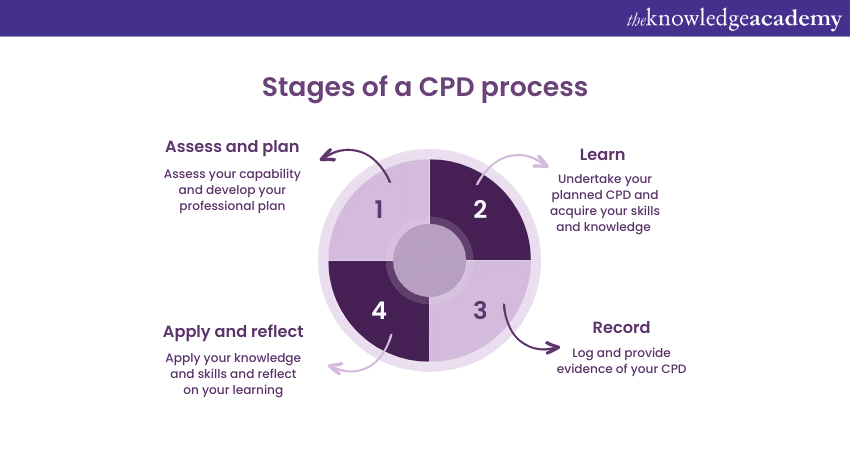We may not have the course you’re looking for. If you enquire or give us a call on 01344203999 and speak to our training experts, we may still be able to help with your training requirements.
Training Outcomes Within Your Budget!
We ensure quality, budget-alignment, and timely delivery by our expert instructors.

Health and safety are some of the most pressing concerns for any modern-day organisation. The optimal health and safety of employees should be high up on the list of priorities for such an organisation. Achieving this requires hiring employees with updated skills and knowledge in the domain. Employers tend to prefer candidates who have the know how on maintaining ideal health and safety standards in the workplace. Aspiring candidates can assure prospective employers by gaining certifications from globally recognised compliance bodies, such as the Institution of Occupational Safety and Health (IOSH). One of the features that IOSH provides is IOSH CPD, or Continuing Professional Development.
According to the International Labour Organisation (ILO), the human cost of occupational injuries and illnesses is estimated at 3.4% of the world’s GDP. This puts the need for updated knowledge of health and safety standards into context and demonstrates the need for CPD. This blog will elaborate on what IOSH CPD is and how the process works.
Table of Contents
1) What is IOSH CPD ?
2) Benefits of IOSH CPD
3) What are the stages of an IOSH CPD process?
4) How do you record IOSH CPD activities?
5) What do you put in an IOSH CPD log?
6) Conclusion
What is Continuing Professional Development (CPD)?
Continuing Professional Development, or CPD, is one of the key benefits of IOSH membership. CPD involves committing to a continual learning process to improve your skills, knowledge, and expertise through development activities. The process requires you to record and reflect on what you have achieved or gained.
Embarking on a CPD process demonstrates your commitment to becoming a more well-rounded Occupational Safety and Health (OSH) professional. It also helps you stay up to date with the latest industry developments and become the best professional you can be. CPD is now required by all major professions and is not about maximising revenue from practitioners who come back for training.
Benefits of CPD
CPD offers a path of continuous development. Here are a few benefits that will elaborate the use of CPD:
1) Builds confidence: “Practise makes a man perfect”, and perfection brings confidence and credibility. Once an employee starts CPD, they see a rise in their work ethic and competency.
2) Responsive to change: Change is inevitable, and the only way to deal with it is by learning new skills and gaining current knowledge. CPD helps you achieve the state where you can repose to change with minimum difficulty.
3) Finding gaps in development: Finding loopholes becomes complicated when you are unaware of certain aspects of your job. CPD helps you spot these organisational gaps that must be eliminated for growth and sustainability.
4) First impression: Job interviews usually require a good first impression. Having the necessary knowledge, improved skills, and expertise will surely advance your first impressions.
5) Better career choices: Harnessing new skills and personal development offers a boost to make better career choices. One can achieve a higher role in a hierarchy if they are better suited. Regularly updating your skills also safeguards your current position in an organisation.
How does CPD benefit a Health and Safety professional?
CPD offers several benefits to Health and Safety professionals, including:
1) Establishing a structured career path in the health, safety and environment domain, which can lead to better employment packages.
2) Highlighting gaps in your knowledge, skills, or experience, and encouraging reflection on Health and Safety practices to identify areas of improvement.
3) Building confidence and credibility.
4) Tracking continual learning and progress
5) Safeguarding status as a Health and Safety professional and gaining a competitive edge over other candidates.
6) Developing and maintaining competence and knowledge.
7) Ensuring optimal efficiency in one’s role within an organisation.
8) Keeping up to date with changes in the ever-changing OSH profession and expanding one's knowledge horizons.
9) Demonstrating the ability to implement the latest standards in OSH or professional practices
10) Showing a commitment to lifelong learning.
Prepare for your IOSH exam with these IOSH Managing Safely Exam Questions to get certified.
What are the stages of a CPD process?

IOSH CPD offers the opportunity to establish a structured career path and safeguard one’s status as a Health and Safety professional. The process typically involves four stages:
Assess and plan
The first step of the CPD process requires you to assess your capabilities and develop your professional plan.
Learn
The next step requires you to undertake your planned CPD and acquire the necessary skills and knowledge.
How do you Record IOSH CPD activities?
The following step requires you to maintain a log and provide evidence of your IOSH CPD whenever necessary.
Apply and reflect
The last step in the CPD process requires you to apply your knowledge and skills, and reflect on the continual learning you gained during the CPD.
How can you record CPD activities?
One of the main questions asked about the CPD process is how to record CPD activities. The following steps will enlighten you on what to include in your log:
Date
In your CPD blog, include the date when the development activity was undertaken. Be sure to include the date when you completed the activity and not the date you recorded it. If an activity lasted for several days, weeks, or months, use the last date of the activity.
CPD Hours
Include the total time you spent on the development activity on your CPD log.
Activity/description of learning
Your CPD log should consist of a brief description or account of the training activity, including any outcomes achieved from continual learning.
Reflection
Account for what you took away from the continual learning process and list down his reflections on what you learned.
Evidence of participation
Lastly, keep a record of any documents or certificates of attendance for any CPD obligations. You need to maintain a learning log to keep track of your experiences. Special focus should be placed on activities that are likely to have the most significant impact on your ability to provide services, benefit clients and your organisation. Most professional bodies emphasise the outcomes of a training activity rather than just meeting a specific quota. Be sure to include a mix of both formal and informal activities. You can record your training log manually or on your computer, using a spreadsheet or a CPD recording tool.
Gain a practical, holistic understanding of workplace health and safety practices by joining our IOSH Managing Safely course.
Conclusion
In summary, the IOSH CPD process enables Health and Safety professionals to reflect on the knowledge and skills they need to work ethically and competently. It is a relevant and straightforward process that can be integrated into daily professional activities.
Committing to CPD helps a Health and Safety professional advance their career, establish a structured career path, and maintain their status as an efficient professional.
Get up to speed on the nuances pertaining to workplace Health and Safety with our IOSH Working Safely course.
Frequently Asked Questions
Upcoming Health & Safety Resources Batches & Dates
Date
 IOSH Managing Safely Course
IOSH Managing Safely Course
Mon 18th Nov 2024
Mon 10th Feb 2025
Mon 28th Apr 2025
Mon 16th Jun 2025
Mon 28th Jul 2025
Mon 1st Sep 2025
Mon 3rd Nov 2025







 Top Rated Course
Top Rated Course



 If you wish to make any changes to your course, please
If you wish to make any changes to your course, please


